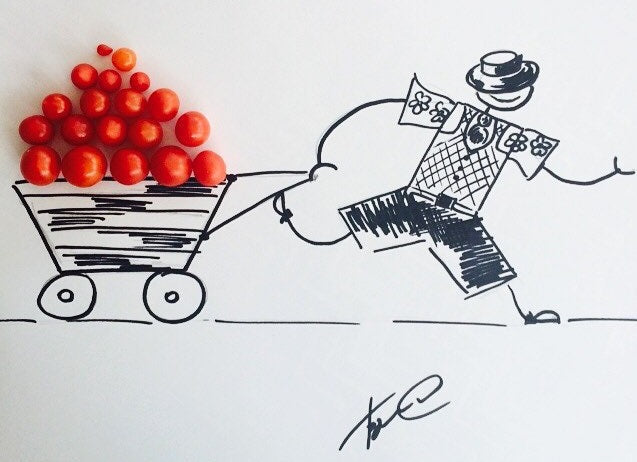News
Earth Day: A Deeper Look Into How We’re Revolutionizing Fresh Food With You

Food waste: an issue we can’t ignore
The global sustainability debate is increasingly vocal on food production and consumption topics. It’s no secret that animal-based products contribute to the majority of environmental impacts produced by food. On the other hand, the supply chains of vitamin-rich foods like fruits and vegetables are found to be the most inefficient, resulting in waste rates as high as 50% or 60% for leafy greens such as lettuce. On a global perspective, the food we end up not eating grows on land greater than the size of China, produces 8% of anthropogenic CO2 emissions, uses a third of all freshwater and results in an economic loss of $940 billion every year.
The high waste rate of food supply chains becomes even more significant when we consider the current state of global human health. Wastage, which at first glance could be thought of as surplus, is actually happening during a time where malnutrition has been declared as an acute global problem by the WHO. This is true even in developed nations. According to the WHO, malnutrition refers to deficiencies, excesses, or imbalances in a person’s intake of energy and/or nutrients.

Illustration by @itatavladi
Currently, around 690 million people suffer from acute hunger - a state where both nutrients and calories are lacking. 2 billion people consume enough and another 2 billion too many calories, but essential vegetables, fruits, salads and herbs remain expensive and poorly accessible for them, even in developed countries. The discrepancies in our food system are further highlighted by the fact that an estimated 75% of deaths in the developed world are linked to unbalanced diets that contain sufficient or too many calories but few vital minerals and vitamins.
The wastefulness of production and the inability to provide necessary nutrition to everyone point towards acute inefficiencies in our food systems. Fortunately, novel and more sustainable farming methods like local, organic, integrated, hydroponic or vertical farming all promise to solve these problems. But only to an extent. While more efficient and sustainable in some focus areas such as water or pesticide use, these methods still fall into the same overly long food supply chains characterized by unfair price margins for farmers, unnecessary transport distances and high levels of food loss. At the consumer level, they still yield the same rates of food waste and nutritional degradation that ends up providing us with too few vitamins and minerals.
The solution of growing our own food
To deal with so-called ‘end of the pipe’ problems like reducing food waste or preserving nutrients, there are wonderful initiatives and new evolving technologies all around the world. Growing some of the food at home, however, would be almost a magical fix to all of these problems. When growing at the place of consumption, there are no food miles, no heating or cooling required, no pesticides or other harmful plant protection chemicals used, and there’s no food waste or loss of nutritional value as you can harvest just before consumption.

@hothouse.jungle
We believe that making indoor gardening possible for anyone around the world is the ultimate key to food sustainability and security. Some 150 years ago, a lot of us grew food where they lived. WWI and WWII saw cities around the world plant victory gardens to boost morale and fight food deficiency. We believe that with space and resource-efficient technologies that require no knowledge of gardening, growing vitamin-rich food at home would be possible for anyone.
We know this because there are already hundreds of thousands of indoor gardeners out there who contribute to this cause and who started with little or no prior knowledge of growing their own food. Last year alone, our global community grew more than 5 millions plants. They avoided wasting around 260 tonnes of food and saved 657 tonnes of CO2, just by growing some of their food at home. Furthermore, almost 4 million liters of water were saved and 19.2 tonnes of CO2 emissions from our roads were avoided. In our minds, these indoor gardeners are the true heroes of sustainability.